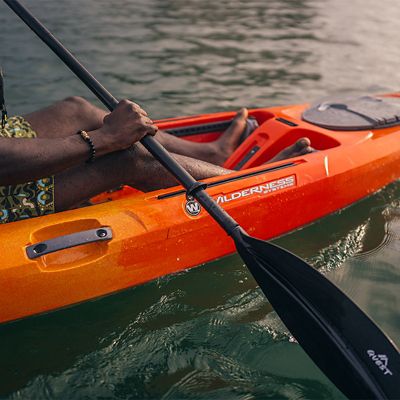
Whether it’s a sit-on-top or sit-inside, one of the kayak’s best qualities is its ability to carry a lot of gear—be it a simple outing or multi-day foray into the wilderness. But while extra food, clothes, and overnight camping equipment can be stowed in hatches or lashed down in storage wells (often within larger dry bags), you’ll still need key items organized and close at hand. Whether it’s water, sunscreen, snacks, binoculars, first-aid kits or any key electronics (phone, GPS, camera, etc.), the right deck bag will deliver: holding goods quickly accessible from your main paddling position.
Most deck bags are designed with that reachability in mind. They’re built to fasten to the top of the hull (or to the nose of the standup paddleboard, in the case of touring-style SUPs), by fitting under and clipping into deck bungees. However, some come equipped with special straps and other attachment points to fasten to the top of your hull (or board nose) without bungees. The bottom line is the same: keeping necessities close while you’re paddling, increasing your craft’s storage space, and bolstering your comfort and safety on the water. Consider the following factors and pick the best option to gather gear and go.
Waterproof vs. Non-waterproof
This is the most important design feature to consider. Some deck bags are waterproof, creating a perfect place to keep layers, phones, food and other gear that needs to stay dry; others are not, and are used primarily for stashing day-paddling essentials like water bottles, sunscreen and other gear that can get wet. Determine if dry gear is a must, or if lower cost and basic utility of a non-waterproof bag will get the job done.
Waterproof bags are made from such materials as Hypalon rubber, PVC and vinyl-coated nylon, while non-waterproof deck bags are often made from nylon mesh. Pay attention to whether or not the deck bag is billed as “waterproof” or “water-resistant.” While water-resistant bags, usually made of thinner-weave nylon, can keep errant splashes at bay, don’t trust them for items like phones that must stay dry.
Accessibility
Envision how your deck bag will fit on top of your boat. Is there hull space in front of your cockpit to accommodate it? Or, as is often the case on sit-on-tops (and even canoes), might your deck bag fit better behind your seat or even between your legs? Take note of this so you can ensure your bag’s zippers and pockets are in the right places to access. Also, notice if your kayak has deck rigging, often in the form of elastic bungee-type cords, to slide the deck bag under; if not, it will need additional strapping to connect to the boat. Word to the wise: Practice attaching it before your maiden voyage.
















